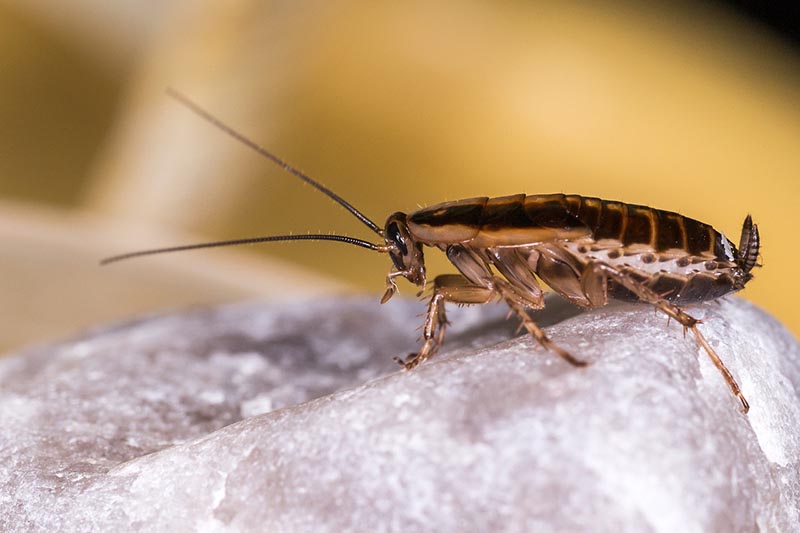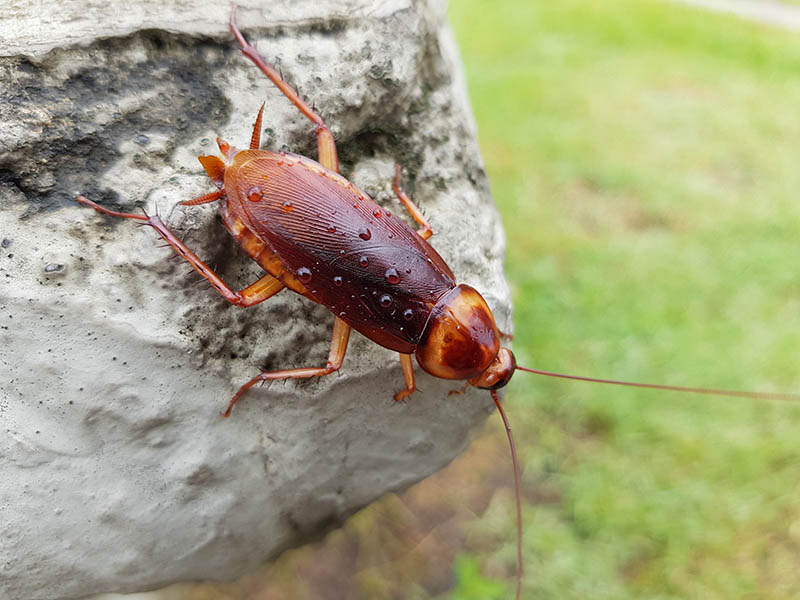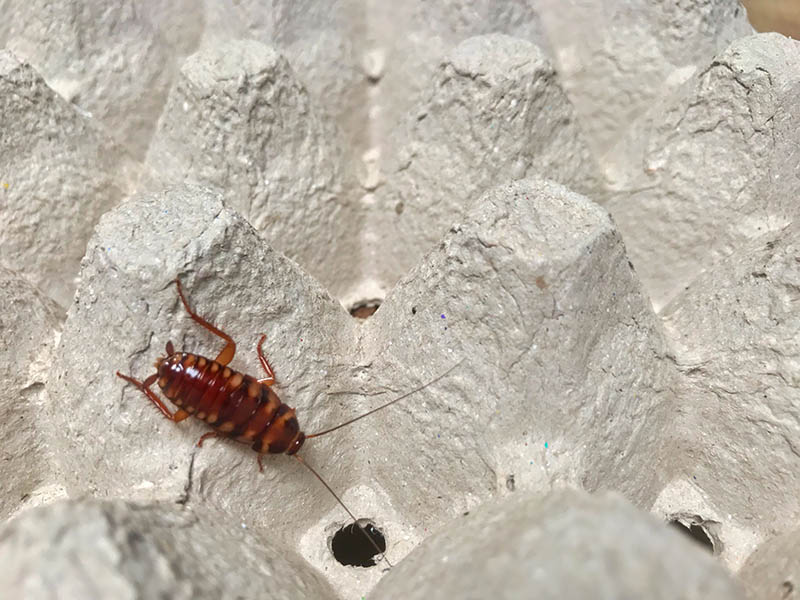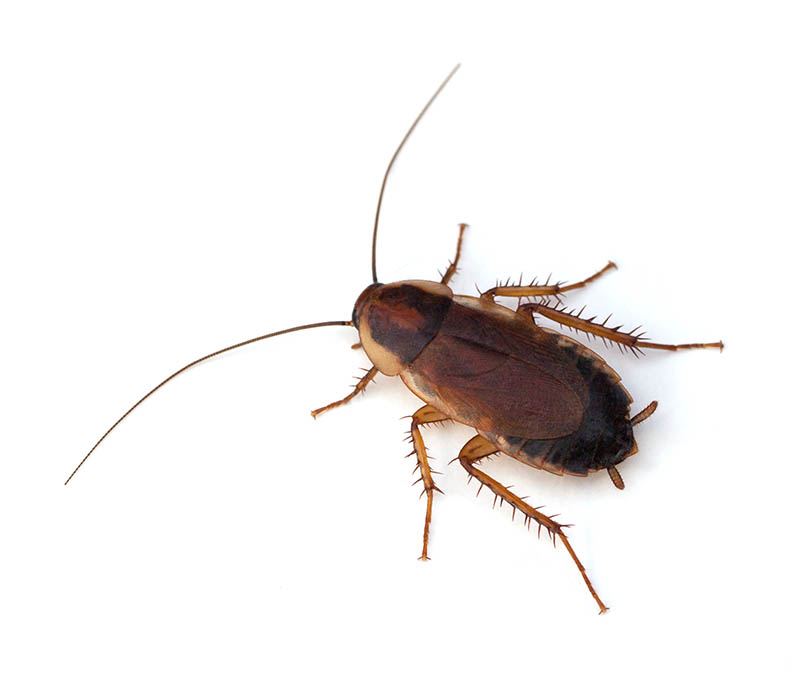5 Types of Cockroaches in Canada (With Pictures)
-
Kathryn Copeland
- Last updated:

Cockroaches are certainly not the most pleasant subject to read about, but for many of us in Canada, it is sometimes necessary when you want to avoid an infestation.
There are 3,500 species¹ found around the world but lucky for us in our colder country, the majority of these are in the tropics and subtropics. If you think you’ve spotted one in your home, the first thing you need to do is identify the insect – is it a cockroach and if so, what kind?
There are 10 species in Canada, three or four of which are wood cockroaches, but there are four species that are most commonly found in Canada.

The 5 Types of Cockroaches Found in Canada
1. German Cockroach

| Scientific Name: | Blattella germanica |
| Colour: | Pale to medium brown |
| Size: | 1/2 to 3/8 inch |
| Range: | All of Canada |
No, these cockroaches are not from Germany – they actually come from Southeast China. The German Cockroach is the most common roach in Canada. The males are a paler brown than the females and have two dark lines on their heads.
These cockroaches prefer a warmer environment, so they are found in homes, hotels, restaurants, and pretty much any heated building with food and water. They also gravitate to kitchens and bathrooms in sinks, stoves, refrigerators, and walls.
And like all cockroaches, they come out at night and will dart back into hiding when you turn on the lights. They eat both meat and plant sources and have been known to eat things like soap and toothpaste when food is scarce.
Unfortunately, if you ever see a German Cockroach during the day, this can indicate a serious infestation. Particularly since the female can lay up to 100,000 eggs a year!
2. American Cockroach

| Scientific Name: | Periplaneta americana |
| Colour: | Darker reddish-brown |
| Size: | 1.1 to 2 inches |
| Range: | All of Canada |
The American Cockroach is the largest roach found in Canada as well as the fastest runner. They are native to the Middle East and Africa but arrived on North American shores on ships hundreds of years ago.
These roaches are most likely to infest commercial buildings such as restaurants, bakeries, supermarkets, and warehouses but can be found in homes as well. Like most roaches, they prefer damp and dark environments such as in bathrooms, basements, and under kitchen sinks.
They find their way into apartments and houses through sewer systems as well as air ducts and plumbing. They will eat pretty much anything and excrete an odorous residue that you can smell if you have an infestation of American Cockroaches.
3. Oriental Cockroach

| Scientific Name: | Blatta orientalis |
| Colour: | Shiny dark reddish-brown to almost black |
| Size: | 1 inch |
| Range: | All of Canada |
Oriental Cockroaches are also fairly large and have a shinier exoskeleton than other roaches. They have also been called Waterbugs due to their preference for moist and dark places.
They don’t fly, are pretty slow, can’t climb well, and are often found in porches, sewers, drains, and damp basements. They can also be found outside in woodpiles and under mulch, bushes, and leaf litter. They usually ingest decaying plants, animal remains, and starchy human food.
They actually prefer cooler temperatures and will likely enter homes and other buildings during the hotter summer months.
They are one of the worst household pests and are thought of as the dirtiest roach in Canada – they are known to spread E. coli, dysentery, salmonella, and food poisoning.
The Oriental Cockroach spreads these diseases by walking on your dishes, utensils, countertops, and food.
4. Brown-Banded Cockroach

| Scientific Name: | Supella longipalpa |
| Colour: | Tan to light brown with 2 horizontal pale bands of colour |
| Size: | .5 inch |
| Range: | Most of Canada except northern regions |
The smallest roach in Canada is the Brown-Banded Cockroach. They aren’t as attracted to damp places as the other species and can be found in kitchen cupboards and appliances. But they can also be found in other rooms such as bedrooms and living rooms.
Like other roaches, they only come out at night and avoid coming out during the daytime. They eat pretty much anything, even non-edible items like wallpaper, books, fabric, and sewage.
Brown-Banded Cockroaches spread diseases and carry bacteria that cause diarrhea and gastroenteritis and can also trigger asthma and allergies.
5. Pennsylvania Wood Cockroach

| Scientific Name: | Parcoblatta pensylvanica |
| Colour: | Dark brown with yellowish sides |
| Size: | .5 to 1.2 inches |
| Range: | Manitoba to the Maritimes |
There are a number of species of wood cockroaches, but the Pennsylvania Wood Cockroach is the most common in Canada. They are most often found on trees, both on the trunks as well as the lower branches of elms and oaks. You can also find them in piles of wood and tree stumps.
When one of these roaches finds its way into your home, it’s typically because they came in with firewood that you’ve brought indoors. The good news is these cockroaches don’t live with roaches, so infestations are very unlikely.
This also means they don’t contaminate surfaces in your home. They eat decayed organic matter such as dead plants, manure, and compost. They do not flourish indoors for lack of their preferred food and it’s not moist enough for them. They also prefer cooler temperatures.
The Pennsylvania Wood Cockroach is definitely one of the more pleasant cockroaches if they wind up in your home, which is usually by accident anyway.

How Do You Prevent Cockroaches?
First, you must ensure you don’t have cockroaches in your home. If you have a serious infestation, your best bet is to hire professional exterminators.
Following this, every surface needs to be thoroughly cleaned – furniture and floors swept and vacuumed, all kitchen surfaces wiped down, fabrics and carpeting washed. You’ll also need to clean under and behind large appliances as well as in all nooks and crannies.
Once the roaches are eradicated and your home clean, you’ll need to take action to prevent them from coming back:
- Fill in cracks: Any cracks or gaps in your foundation or walls should be sealed up, which can stop cockroaches from gaining access. Also, fix cracks in plumbing and leaky faucets.
- Store food properly: Any food not stored in your fridge or freezer must be placed in sealed containers. This includes food on your counters and in cabinets, and don’t leave leftovers in the bedrooms or living room.
- Keep your home clean:Don’t leave dirty dishes in the sink or counter overnight. And always ensure you’ve swept up any crumbs and otherwise keep your house clean. This can also keep other pests away.
- Always take the garbage out:Don’t place garbage bags anywhere inside your home – deposit them in bins outside before night.
- Consider a dehumidifier:Using a dehumidifier can help to dry out your home. Since cockroaches prefer a damp environment, this can create an inhospitable environment.

Conclusion
If you’ve seen even one cockroach, chances are there are hundreds behind the walls and otherwise hiding out. It’s highly unhygienic as well as dangerous, considering how many diseases they carry around with them.
You can certainly try using roach traps in your home, but the more severe the infestation, the more likely you’ll need to get a professional involved.
Just remember to keep your home clean, the cracks sealed, and the food safely stored away. The last thing we all want is to deal with a cockroach issue.
Featured Image Credit: Brett Hondow, Pixabay
Contents